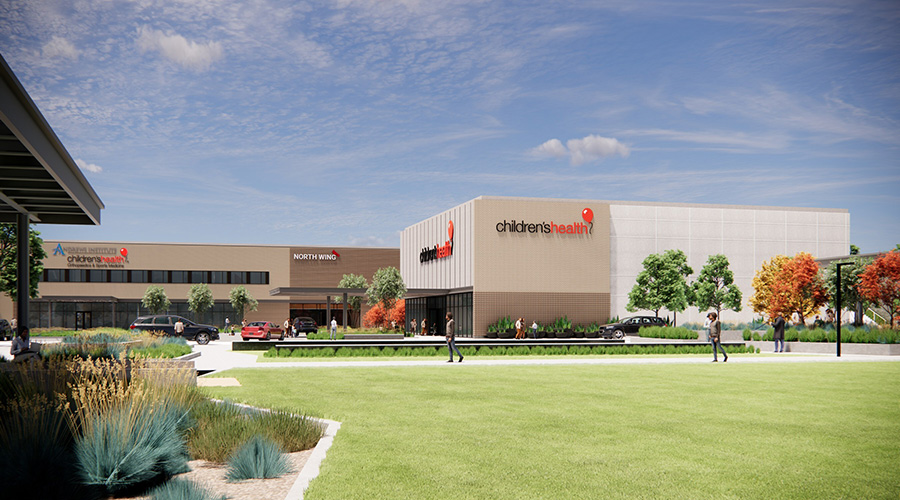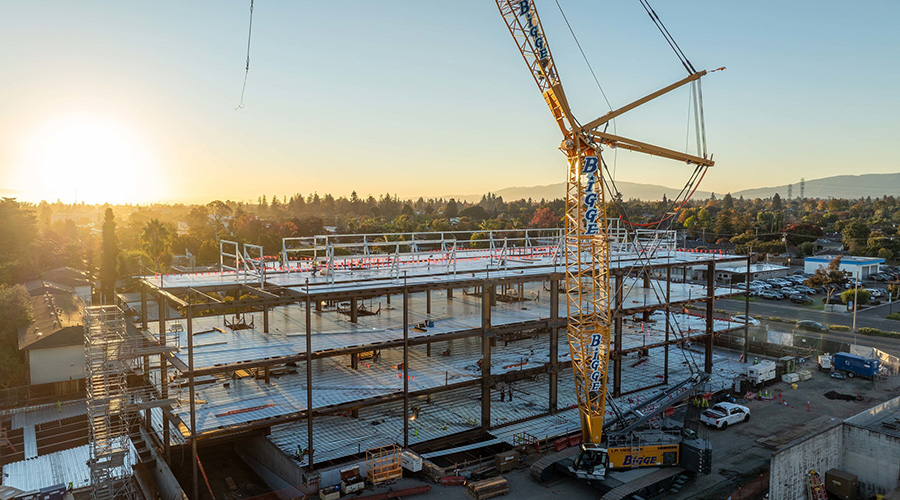In hospitals today, the creation of a truly comfortable atmosphere is of highest priority, not only in terms of patient experience, but just as importantly, in terms of staff experience. According to the Centers for Disease Control and Prevention (CDC), more than 1 million registered nurses (RNs) work in hospitals, making nursing the largest hospital workforce. As the front line of contact, they play a vital role in shaping the experience and quality of care patients receive at a facility. Therefore, it is of great priority to ensure optimal working conditions. When one of the top complaints from nursing staff is pain related to working on their feet, the place to first consider enhancing staff experience is the flooring.
Reducing leg and back pain
Heel pain, plantar fasciitis, shin splints, knee pain, hip pain and low back pain — all stemming from long hours worked while standing — are common grievances among nursing professionals. With some nurses walking the equivalent of several miles in a single shift, there is a wide focus on proper shoes. But to identify other potential sources of discomfort, a good place to start is the actual floor. The principal change that will result in immediate benefits to nurses is to ensure the flooring they spend their days walking on is a resilient and forgiving material. In a healthcare setting, which also demands many other performance attributes, one of the leading resilient flooring products on the market today is rubber.
Rubber flooring offers the ideal amount of buoyancy in every step to help alleviate the pressure constantly placed on the joints of nursing personnel. Staff who encounter reduced leg and back pain will not only feel more energized, but also will be able to better focus on the tasks at hand, instead of the ache in their heels. This translates to improved quality of care and a better experience for patients.
Heavy rolling loads
In addition to the comfort provided to caregivers, allowing nurses to better focus on patients, rubber flooring poses several other overarching benefits. When assisting patients in wheelchairs, moving large rolling carts or transporting heavy equipment, hospital personnel will find these heavy rolling loads glide with ease on a rubber floor. A low resistance to wheeled traffic greatly diminishes the possibility of over-exertion, a principal cause of lower back injury in a healthcare environment. As a result, personnel can provide service in a safe, timely and efficient fashion, further increasing patient satisfaction.
Minimizing slip, trip and fall risks
As nurses continuously move about, another significant concern for their well-being in the workplace is slip, trip and fall (STF) risks. According to the U.S. Bureau of Labor Statistics, STF accidents are the second leading cause of workers’ compensation claims in hospitals. The most common STF occurrences involve contaminates on the floor. Contaminates include water, chemicals or any other liquid that make the floor slippery. The natural density of rubber easily stands up to these spills, as the surface does not allow absorption of liquids, making for a swift and effectual cleanup. Minimizing STF occurrences ensures a healthy and reliable workforce, alongside reduced payouts in workers’ compensation claims, which can range up to tens of thousands of dollars per single claim.
Less disruption from maintenance needs
When it comes to occupied areas that need to be cleaned by housekeeping personnel, nursing staff as well as patients are far less disrupted with the minimal upkeep necessary for rubber flooring. Cleaning can be completed swiftly and proficiently, even in the most heavily trafficked spaces that are in operation 24/7, with a simplistic maintenance routine. Some rubber floors can be maintained using just water -- no stripping or waxing needed.
Due to the absence of harsh chemicals and floor finishes, patients do not need to be moved according to custodial schedules, rooms can remain occupied, and nurses are able to work uninterrupted. This is an important benefit to administrators as well, who must monitor the cost effect of closing an area for extended periods of time for cleaning protocols.
Infection control
As stated by the CDC, the incidence rate of illnesses per 100 full-time workers employed in nursing facilities is 13.5; by contrast, the national average is 1.8. This information highlights why hospitals are held to the highest standard in controlling the spread of infection. Rubber flooring’s bacteriostatic properties, which inhibit the growth or multiplication of bacteria, distinctly contribute to a sterile environment.
When infection rates decrease, the job of a nurse eases in several ways, including less personal risk of falling ill, reduced anxiety and lower infection statistics among patients they care for and come in contact with.
Acoustics
If nurses in hospitals have difficulty concentrating due to sound interference, it can result in missed patient orders, higher stress levels, decreased productivity and narrowed retention of information when speaking with patients and other medical staff. Patients may experience longer recovery times if they cannot sleep due to the constant echoes of footfall, speech and cart traffic. This is all important to note as the healthcare industry shifts to pay-for-performance vs. fee-for-service. Unwanted sound or noise is largely eliminated by the dampening acoustical properties of rubber flooring. Acoustic performance is derived from a combination of sound absorption, reverberation and transmission of impact sound. Exemplifying these characteristics, rubber can remove up to 75 percent of undesirable clatter.
As reported by the U.S. Department of Labor, employment of registered nurses is expected to grow 26 percent from 2010 to 2020, faster than the average for all occupations. Growth will occur primarily because of technological advancements; an increased emphasis on preventative care; and the large, aging baby-boomer population who will demand more healthcare services as they live longer and more active lives. Now is the time to select your course carefully, down to the surface materials you choose, as these decisions will impact your current and future nursing workforce, which in turn impacts patient visits and outcomes. By selecting resilient rubber as the flooring of choice within a hospital, the growing population of nurses will appreciate reduced leg and back pain, decreased risk of over-exertion from large rolling loads and minimized STF occurrences. Additionally they will enjoy less disruption from housekeeping routines, improved infection control and acoustic benefits that contribute to a quiet healing environment.
Hughes is a marketing specialist for nora systems, Inc.

 Spaces That Support: Patient-Centered Design for Modern Reproductive Health
Spaces That Support: Patient-Centered Design for Modern Reproductive Health Modernization of Buildings Require Collaboration Across All Disciplines
Modernization of Buildings Require Collaboration Across All Disciplines Children's Health Announces Plans for RedBird Specialty Center in Texas
Children's Health Announces Plans for RedBird Specialty Center in Texas How Can Healthcare Facilities Use Efficiency to Drive Climate and Health Goals?
How Can Healthcare Facilities Use Efficiency to Drive Climate and Health Goals? El Camino Health Rehabilitation Hospital Officially Tops Out
El Camino Health Rehabilitation Hospital Officially Tops Out